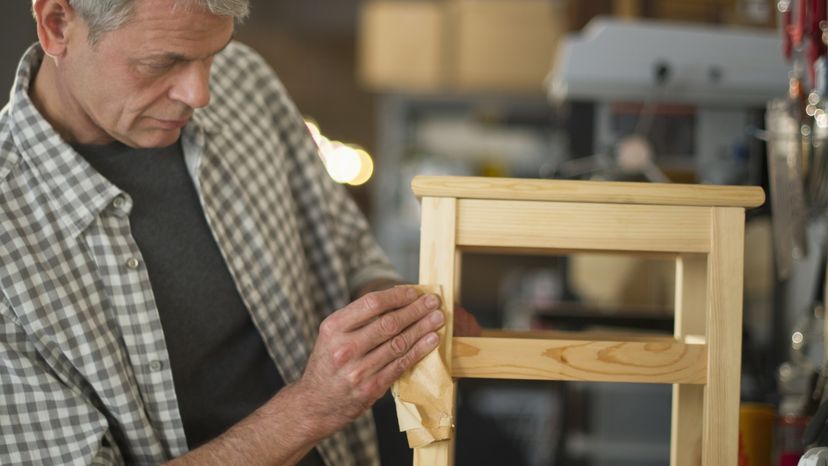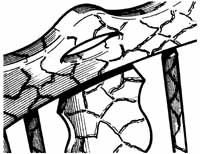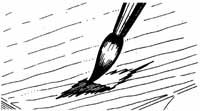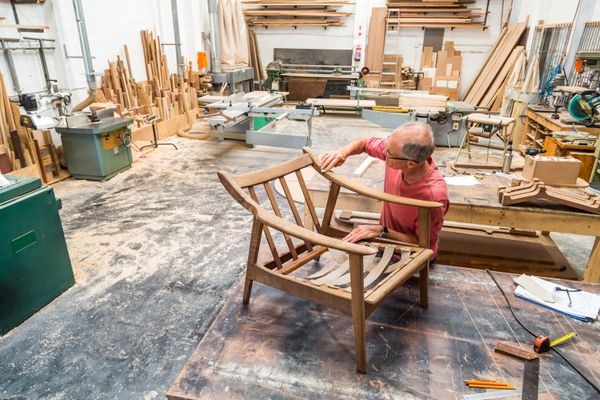
Before you start restoring a piece of furniture, you need to know what finish is on it. If you don't know what the finish is, you could end up damaging a perfectly good finish or wasting your time on a technique that won't work. This knowledge is also essential in repair work; determining the finish is especially helpful when you're matching one finish to another. For restoration purposes, the only distinction that really matters is the difference among the three basic natural or clear finishes: shellac, lacquer, and varnish.
The pigmented finishes, such as paint or enamel, are easy to identify. The only other finishes you may encounter are oil, wax, and penetrating sealers, identifiable by touch and the absence of a high gloss. These finishes can be restored only by reapplication. On most furniture, a clear finish is one of the basic three: shellac, lacquer, or varnish.
Advertisement
Before you do any work on the finish, you must identify it. First, test the finish with denatured alcohol; rub a little alcohol onto an inconspicuous finished area. If the finish dissolves, it's shellac. If it partially dissolves, it's probably a combination of shellac and lacquer. Test it again with a mixture of denatured alcohol and lacquer thinner; this should completely dissolve the finish. If alcohol doesn't affect the finish, rub a little lacquer thinner on an inconspicuous finished spot. If the area turns rough and then smooth again, the finish is lacquer; if the finish crinkles and doesn't get smooth again, it's a type of varnish. If neither alcohol nor lacquer thinner affects it, the finish is varnish.
After identifying the finish, you're ready to restore it. Whether the problem is dirt, cracks, discoloration, or overall wear, it can often be solved by the following restoration techniques.
Cleaning Techniques
The easiest restoration process is cleaning; what first appears to be a beat-up finish may just be dirt. Over a period of years, even furniture that is well cared for can acquire a dull, sticky coating of wax and dust. In many cases, this coating can be removed with an oil-based commercial wood cleaner/conditioner. These cleaners will cut through layers of dirt and wax. They are available at furniture stores, supermarkets, and paint stores.
Following the manufacturer's instructions, apply the cleaner generously with a soft cloth and let it stand for an hour or two. Then wipe off the cleaner with another cloth. Repeat the process, using plenty of cleaner, until the wood is clean and lustrous -- this may take up to four or five applications. Buff the clean wood lightly to remove excess oil.
If a commercial cleaner/conditioner doesn't do the job, remove the built-up grime with a mild solution of warm water and liquid detergent. Use sparingly and work quickly; don't soak the piece of furniture or pour the solution over it. Water can cause a white haze to appear on a shellac or lacquer finish, the same haze that appears when a glass leaves a white ring on a table. When the furniture is clean, rinse off the detergent with water and then carefully and thoroughly dry the wood with a soft cloth or a towel.
Let the wood dry completely. If there's a haze on the finish, you may be able to remove it with steel wool. Buff the surface lightly, with the grain of the wood, with No. 0000 steel wool. Then apply a commercial cleaner/conditioner and lightly buff the wood again.
If detergent cleaning doesn't work, use a solvent -- depending on the type of finish -- to clean the wood. Solvent cleaning is the last resort to consider because it may damage the finish. Use mineral spirits or turpentine on any finish; use denatured alcohol on varnish or lacquer. Do not use alcohol on shellac or on a shellac/lacquer mixture. Working in a well-ventilated area -- outdoors is best -- apply the solvent with a rough cloth, such as burlap or an old towel. Then wipe the wood clean with another cloth. Finally, apply a commercial cleaner/conditioner, and buff the wood lightly.
Detergent and solvent cleaning can also be used to rejuvenate wicker and rattan furniture. Use the same techniques mentioned before, but be especially careful not to use too much water. Let the piece of furniture dry thoroughly; if possible, set it in the sun to dry. If the old finish is very thin or worn, apply one or two coats of spray varnish, spraying carefully to cover the wicker or rattan evenly. Let the new finish dry for several days before using the furniture.
If your furniture finish is cracking, scratched, or showing an alligator-type texture, you'll find another option to make it look like new in the next section.
Advertisement



